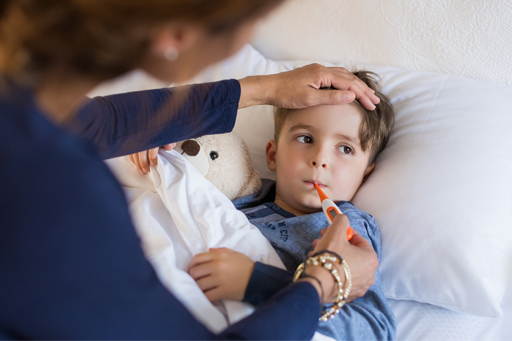Hand, foot and mouth disease
In Clinical
Follow this topic
Bookmark
Record learning outcomes
Scenario
Technician Vicky is approached by Katie.
“Have you got a moment, Vicky?” asks Katie. “I need some advice about Jacob.”
“Yes, of course,” smiles Vicky. “What’s up with Jacob? He’s, what, four?”
“That’s right, but he’s not well, and I’m not sure what to do,” replied Katie. “He’s been a bit off colour for the last few days – a bit of a temperature and cough, nothing too bad, but the big thing is that he’s off his food. This never happens so I looked in his mouth and he’s got some spots. They’re looking a bit like ulcers now, but not like any I’ve ever had.”
“Has he got any spots anywhere else?” enquires Vicky.
“Funny you should say that, because when I went to him in the night – he’s not sleeping very well at the moment – and was holding his hand, I noticed he’s got a few spots on the sides of his fingers,” says Katie. “I got him to have a shower this morning, and I thought I spotted a few on the side of his foot, but it had got a bit steamy in the bathroom by then, so perhaps I was mistaken. Any ideas what it could be? He’s up to date with all his jabs so it can’t be measles or anything like that, surely?”

Answer
From Katie’s description, Jacob sounds to be suffering from hand, foot and mouth disease (HFMD). While the lesions – which typically affect the tongue, inside of the mouth, hands, feet and sometimes the buttocks and groin – appear unpleasant, and the other symptoms of fever, appetite loss, coughing, abdominal pain and sore throat can be debilitating, the viral infection is generally mild and resolves within a week to 10 days without any treatment other than OTC measures such as mouth ulcer treatments and simple painkillers.
Medical advice is only needed for children who:
- Aren’t drinking any fluids or have signs of dehydration
- Develop fits, lose consciousness, or appear weak or confused
- Have skin that is very painful, red, swollen or hot, or there appears to be pus
- Have symptoms that haven’t improved after seven to 10 days or seem to be deteriorating.
Babies under three months of age with a temperature of 38°C or higher, or aged between three and six months with a fever of 39°C or above, should also be seen by a doctor. Advice should also be sought by expectant mothers who develop HFMD towards the end of their pregnancy.
The bigger picture
HFMD is spread by droplets – that is from an infected person coughing or sneezing – and by direct contact with the fluid in the blisters. It is also spread by the faecal-oral route. Someone can be infectious for up to a week before developing symptoms and up to eight weeks afterwards.
Children are most likely to get HFMD, with the highest incidence among those under four years of age, and outbreaks within families and childcare centres are common. Infection control measures – keeping the child away from school, for example – are not necessary, unless the child seems too unwell to attend. The usual hygiene measures of handwashing, not sharing crockery and cutlery, and covering the mouth and nose when coughing or sneezing can help reduce the risk of transmission.
The majority of adults are immune as they will have developed immunity as a result of being exposed to the causative virus during childhood. It is worth highlighting that while HFMD is considered a “minor disease”, it can occasionally lead to complications such as bacterial infection of the lesions, and even life-threatening conditions such as encephalitis (swelling of the brain) and meningitis.
Extend your learning
- The scenario above states that medical advice is necessary if a child with HFMD shows signs of dehydration. Do you know these are? Check your understanding via NHS Choices
- Is HFMD related to the foot and mouth disease that can affect animals? Find out via the CDC
- Do you think you would recognise the lesions caused by HFMD?
